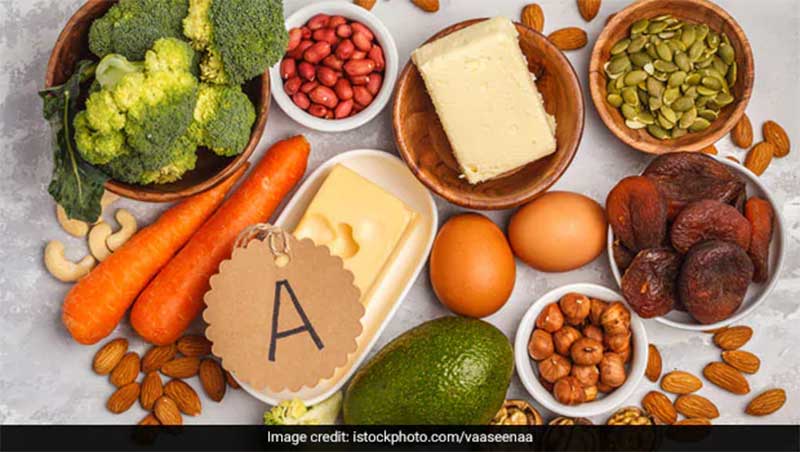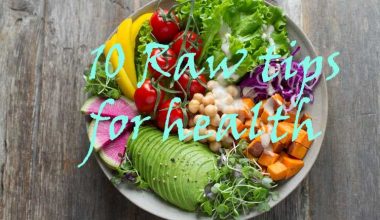The human body cannot function properly without vitamin A. Everyone from the old to the infant requires it. It is a potent antioxidant. Its chemical name is retinol. It is a fat-soluble vitamin. It is derived from several animal and vegetable sources. Vitamin A also occurs in fruits of various hues such as yellow, orange, red, and green fruits.
Benefits of Vitamin A:
1. Eye Health:
Vitamin A is crucial for keeping vision. It helps transform light that reaches your eyes into electrical messages conveyed to the brain. Night blindness, a symptom of vitamin A deficiency, develops owing to a lack of rhodopsin (a pigment present in the retina). Adequate vitamin A consumption reduces night blindness and may decrease age-related visual deterioration. Additionally, beta-carotene (a provitamin A molecule) may lessen the incidence of age-related macular degeneration.
2. Immune System Support:
Vitamin A helps a healthy immune system. It plays a function in cellular communication, growth, and development. Proper vitamin A levels are necessary for immunological function.
3. Skin Health:
While vitamin A is generally connected with skin advantages, it’s necessary to utilize it with caution. Some individuals think it’s useful for treating acne and age-related skin problems. However, whether via meals or skin treatments, moderation is crucial.
4. Reproductive Health:
Vitamin A is necessary for both men and women. It facilitates correct growth and development of embryos throughout pregnancy. In males, a deficit may lead to infertility by preventing sperm cell formation.
5. Cell Growth and Differentiation:
Vitamin A promotes cell growth and differentiation, helping to the creation and maintenance of organs including the heart, lungs, and eyes.
6. Cancer Risk Reduction:
Observational studies show that increased beta-carotene consumption (a type of vitamin A) is connected to a lower risk of some malignancies, including Hodgkin’s lymphoma, cervical, lung, and bladder cancer.

How is vitamin A important for children and women?
Vitamin A is a highly essential vitamin for children and women. It is very important for their health and physical growth but it is more important for pregnant women. Vitamin A is highly needed during pregnancy as it plays an important role in the healthy growth and development of the baby. In addition, vitamin A is passed from mother to baby during breastfeeding, which fulfills the baby’s vitamin A needs.
Vitamin A is important for women’s reproductive health and child health. If a pregnant woman does not get the right amount of vitamin A during pregnancy, various problems can occur in the unborn child. Therefore, children and women should consume vitamin A daily. Apart from this, you can also take the doctor’s advice for vitamin A intake.

Vitamin- A deficiency diseases:
Prevention of Night Blindness:
Vitamin A plays a crucial role in preserving good eyesight, especially when exposed to dim lighting. People who aren’t getting enough of it may develop night blindness, which makes it hard for them to see in dim light or complete darkness.
Xerophthalmia:
This is a more serious eye ailment that may develop from a lack of vitamin A over an extended period of time. Untreated dry eye may cause ulcers, scarring, and blindness by drying out the cornea and conjunctiva.
Increased Susceptibility to Infections:
The vulnerability to infections is heightened because vitamin A is essential for the proper functioning of the epithelial cells that form a protective barrier. Deficiency may reduce the strength of this barrier, increasing the risk of infections, especially those affecting the digestive system and the respiratory tract.
Reduced immunological Function:
Vitamin A plays a crucial role in maintaining healthy immunological function. When immune responses are impaired due to a deficit, infections are more likely to occur and worsen.
Developmental Delays or Problems:
Vitamin A plays a crucial role in ensuring healthy development and growth, especially in kids. Growth retardation and developmental delays are possible outcomes of a deficit.
Follicular Hyperkeratosis:
This disorder is defined by the development of keratin around hair follicles, leading to the creation of rough, raised bumps on the skin. It is a frequent sign of vitamin A insufficiency.
Increased death in Pregnant Women and Young Children:
Vitamin A insufficiency is related with an increased risk of death, especially in pregnant women and young children, particularly in underdeveloped nations where deficiency is more frequent.
Dry Skin:
Chronic vitamin A deficiency may produce dry skin. Vitamin A serves a critical function in skin healing and inflammation management. A deficiency of this vitamin may contribute to inflammatory skin diseases
Eye Problems & eyesight Loss:
Vitamin A is vital for preserving healthy eyesight. Insufficient vitamin A may result in dry eyes, inability to produce tears, and potentially full blindness or damage to the corneas (marked by Bitot’s spots)

Vitamin A foods:
Vitamin A is present in a range of foods, both animal and plant-based. Here’s a list of foods that are excellent providers of vitamin A:
Beef Liver: Particularly cow liver, but also chicken liver, is very rich in vitamin A. Just 3.5 ounces (100 grams) of cooked beef liver delivers a staggering 7,730 micrograms (mcg) of retinol, which is 859% of the recommended daily value (DV).
Fish Liver Oils: Cod liver oil is a rich source of vitamin A. Just one tablespoon (14 grams) of cod liver oil offers 4,080 mcg of retinol, which is 453% of the DV. A 3.5-ounce meal of cooked fish includes 69 mcg of retinol, giving 8% of the daily value (DV).
Eggs: Especially the yolks, which contain vitamin A. A large hard-boiled egg (50 grams) provides 75 mcg of retinol, which is 8% of the daily value (DV).
Dairy Products: Milk, cheese, and yogurt contain vitamin A, especially in fortified varieties.
Fortified Foods: Some foods, such as morning cereals, may be fortified with vitamin A.
Sweet Potatoes: One of the greatest plant sources of vitamin A, sweet potatoes contain beta-carotene, which the body turns into vitamin A.
Carrots: Similarly to sweet potatoes, carrots are strong in beta-carotene.
Dark Leafy Greens: Spinach, kale, collard greens, and other dark leafy greens are rich sources of beta-carotene.
Butter: A tablespoon (14 grams) of butter offers 95 mcg of retinol, representing 11% of the daily value (DV).
Pumpkin: Another food high in beta-carotene, pumpkin supplies a considerable quantity of vitamin A.
Winter Squash: Varieties like butternut squash and acorn squash are high in beta-carotene.
Bell Peppers: Particularly red and yellow bell peppers are significant sources of beta-carotene.
Apricots: Both fresh and dried apricots contain vitamin A.
Mangoes: These tropical fruits are rich in both vitamin A and beta-carotene.
Cantaloupe: Another fruit strong in beta-carotene, cantaloupe supplies a substantial quantity of vitamin A.
Broccoli: While not as rich in vitamin A as some other veggies, broccoli nevertheless provides a reasonable quantity of this nutrient.
Including a variety of these items in your diet may help guarantee an appropriate intake of vitamin A. It’s crucial to remember that although animal sources give preformed vitamin A (retinol), many plant sources include provitamin A carotenoids (like beta-carotene), which the body transforms into vitamin A as required.
nethun
I am Md. Shahriar Pervez. I am a professional blogger and Youtuber. I complete my graduate from AIUB. Please visit this blog to get more information. SUBSCRIBE to this website and stay with us.




